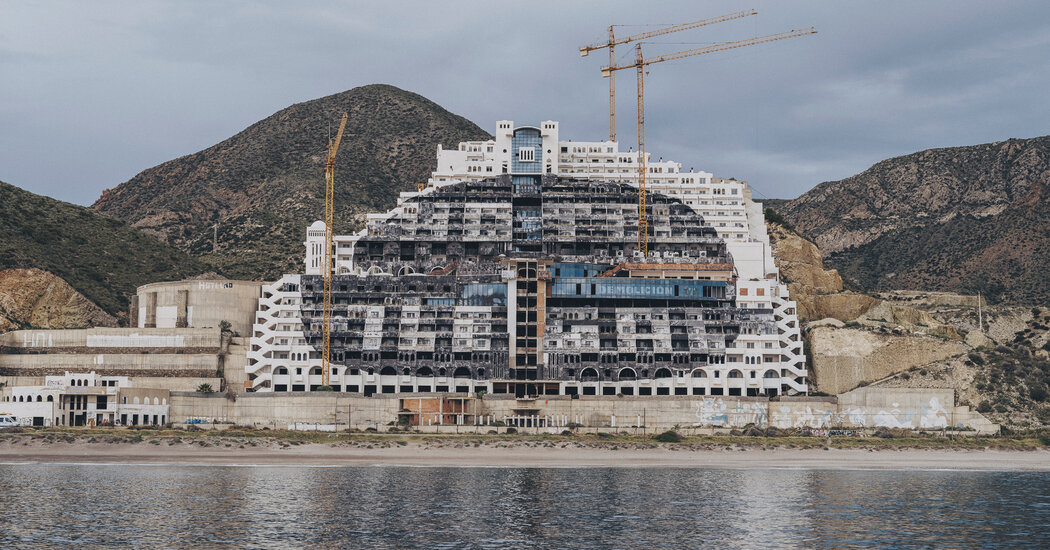

A permit, and then a court battle
The history of the hotel is convoluted, but understanding the timeline can help explain just how a tourism project can go wrong when political, financial and environmental interests are misaligned.
The Cabo de Gata was declared a nature park in 1987. Covering almost 150 square miles of volcanic land, the park encompasses open plains, shrubby hills and coves. It also includes a few existing fishing villages and former mining settlements. When the park was created, the local municipality of Carboneras relabeled a section of the protected area as buildable land. It was eventually bought by Azata, a Spanish real estate developer, which then received a local permit to build its beachfront hotel in 2003. The only other buildings nearby are private homes that were built before the park was created.
Arguing that the hotel contravened the protected status of the park, environmental activists went to court and got a judge to freeze the project in 2006, just as the hotel was reaching the final stages of construction. A decade-long court battle followed until, after several appeals, the Spanish Supreme Court ruled that the hotel violated the park’s protection laws.
Then a new court battle began over who should be responsible for the demolition of the hotel, as well as who should pay for the rehabilitation of the surrounding landscape.
While the case has dragged on through more than 20 separate rulings, the hotel itself has been decaying. Its white facade is defaced by graffiti, and one of the bay windows has the word “demolition” in Spanish painted in large blue letters across it.
In contrast to the Aqaba film set — which was quickly dismantled, with help from the local villagers who rushed to reuse its plywood planks — there is no clear end in sight for the disastrous hotel. In the latest twist, the highest regional court of Andalusia ruled in July that the hotel did not have to be destroyed after all, because Azata, the real estate developer, had a valid building license. Azata didn’t respond to a request for comment.
Beautiful beaches, ugly beach towns
In 2019, before the coronavirus pandemic struck, Spain was the second most popular destination in the world — after France and ahead of the United States — with almost 84 million international visitors. A significant number traveled to the fine-sand beaches of eastern and southern Spain, often staying in heavily built resort towns that also cater to package tourists, like in the skyscraper town of Benidorm. Amid this sea of concrete, Cabo de Gata offered a sharp contrast.



